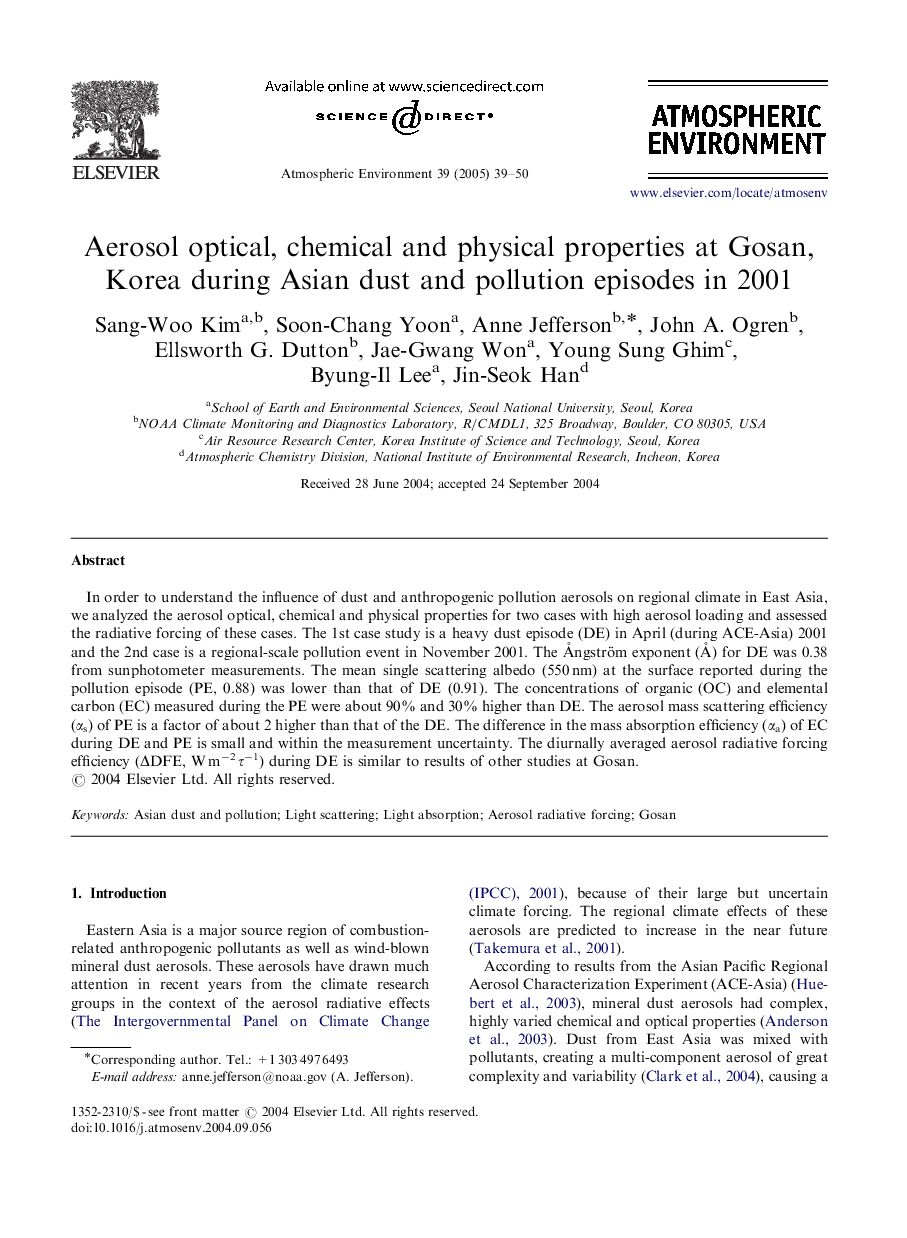| Article ID | Journal | Published Year | Pages | File Type |
|---|---|---|---|---|
| 9458782 | Atmospheric Environment | 2005 | 12 Pages |
Abstract
In order to understand the influence of dust and anthropogenic pollution aerosols on regional climate in East Asia, we analyzed the aerosol optical, chemical and physical properties for two cases with high aerosol loading and assessed the radiative forcing of these cases. The 1st case study is a heavy dust episode (DE) in April (during ACE-Asia) 2001 and the 2nd case is a regional-scale pollution event in November 2001. The Ã
ngström exponent (Ã
) for DE was 0.38 from sunphotometer measurements. The mean single scattering albedo (550 nm) at the surface reported during the pollution episode (PE, 0.88) was lower than that of DE (0.91). The concentrations of organic (OC) and elemental carbon (EC) measured during the PE were about 90% and 30% higher than DE. The aerosol mass scattering efficiency (αs) of PE is a factor of about 2 higher than that of the DE. The difference in the mass absorption efficiency (αa) of EC during DE and PE is small and within the measurement uncertainty. The diurnally averaged aerosol radiative forcing efficiency (ÎDFE, W mâ2 Ïâ1) during DE is similar to results of other studies at Gosan.
Related Topics
Physical Sciences and Engineering
Earth and Planetary Sciences
Atmospheric Science
Authors
Sang-Woo Kim, Soon-Chang Yoon, Anne Jefferson, John A. Ogren, Ellsworth G. Dutton, Jae-Gwang Won, Young Sung Ghim, Byung-Il Lee, Jin-Seok Han,
